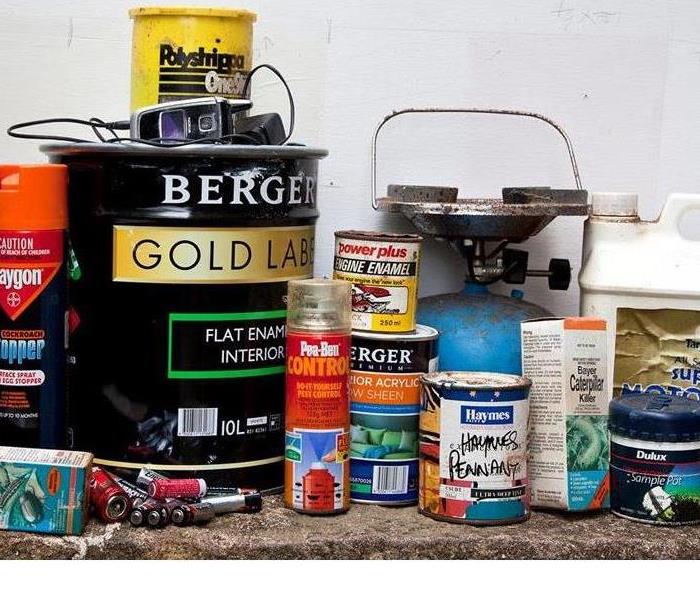Household Chemical Emergencies
7/11/2018 (Permalink)
Chances are you use chemicals to clean, so making sure that you know how to safely handle household products containing hazardous materials, or chemicals can reduce the risk of injury.
Hazardous materials include:
- Cleaning products
- Pesticides
- Automotive products (I.E. Antifreeze/Motor oil)
- Miscellaneous items such as batteries, mercury thermometers, and florescent bulbs
- Flammable products such as kerosene, propane tanks, and lighter fluid.
- Workshop or painting supplies such as paint thinner, and or Turpentine.
- Lawn and garden products like herbicides and pesticides.
Always keep products in their original containers, never remove the labels.
Never store hazardous materials in food containers.
Never mix hazardous chemicals or waste with any other products.
Never use near open flame.
Clean up any and all spills immediately.
Dispose of hazardous materials correctly.
Save the National Poison Control Center number in your cell phone, and post next to every landline in the house.
1-800-222-1222
During an emergency:
- Get out of the residence immediately if there is a chance of fire or explosion.
- Stay up wind, in order to not breathe in any hazardous fumes.
- Recognize and respond to signs of toxic poisoning.
- Difficulty breathing
- Irritation of eyes, throat, and/or skin
- Changes in skin color
- Headache or blurred vision
- Dizziness or lack of coordination
- Cramps, and or Diarrhea
If someone is experiencing toxic poisoning symptoms or has been exposed to a household chemical please call 1-800-222-1222 and find any containers of the substance readily available in order to provide requested information to Poison Control.
Remember to follow the emergency operators or dispatchers instructions carefully, as not all warning labels are up to date.





 24/7 Emergency Service
24/7 Emergency Service
